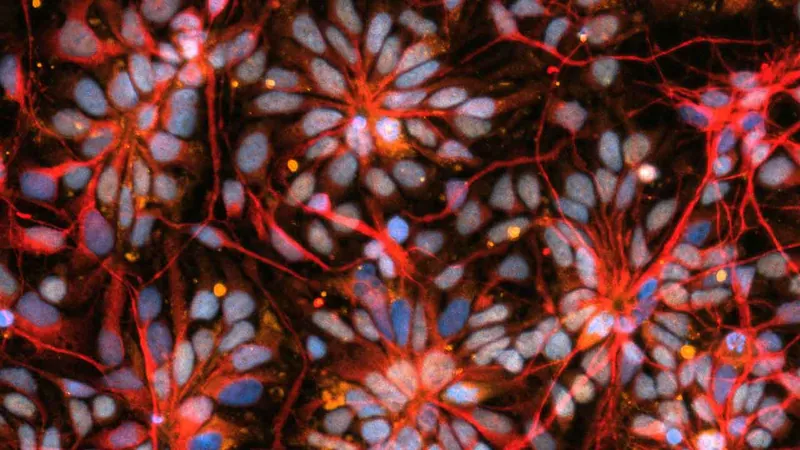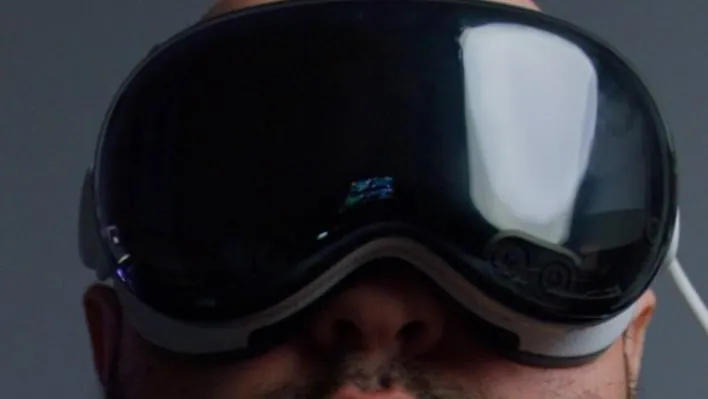
Revolutionizing Neurodegenerative Disease Research: How Microgravity Could Unlock New Therapies
2025-04-28
Author: Amelia
A Race Against Time: Neurodegenerative Diseases Without a Cure
Millions of Americans suffer from debilitating neurodegenerative diseases like Parkinson's, multiple sclerosis (MS), and Alzheimer's—conditions that currently offer no cure and minimal options for early intervention. Thankfully, groundbreaking research aboard the International Space Station (ISS) is paving the way for innovative treatments and a deeper understanding of these life-altering diseases.
Space: The Ultimate Laboratory for Biological Breakthroughs
As Paula Grisanti, CEO of the National Stem Cell Foundation (NSCF), puts it, "Cells mature more rapidly in space, allowing us to observe changes at an accelerated pace. On Earth, these phenomena take significantly longer to manifest." Since 2019, NSCF has initiated six pivotal investigations using human brain organoids—tiny 3D models that replicate brain cell behavior—on the ISS.
With a recent $3.1 million funding boost from NASA, NSCF is set to explode into new realms of research, extending its microgravity studies with three additional ISS projects planned until 2027.
Unprecedented Insights into Brain Disorders
Earlier experiments at the ISS focused on brain organoids derived from cells of individuals diagnosed with Parkinson's and primary progressive MS, conditions affecting over 2 million Americans. Grisanti noted, "These are the first human-specific models sent to space, providing unique insights into cellular interactions that are impossible to witness on Earth. This research unlocks new possibilities for disease progression biomarkers and innovative cell, gene, and drug therapies that can transform treatment options for these afflictions."
Alzheimer's on the Horizon: Expanding the Research Frontier
NSCF's upcoming experiments will tap into the rich potential of organoids created from Alzheimer's patients' cells, targeting a condition impacting around 6.7 million Americans with staggering economic implications exceeding $321 billion annually.
How Brain Organoids Offer Game-Changing Perspectives
Utilizing induced pluripotent stem cells (iPSCs) harvested from human skin cells, NSCF scientists can create brain organoids that mimic the initial stages of brain development. Pinar Mesci, NSCF's space project advisor, highlights the transformative nature of stem cells, saying they can evolve into any cell type in the human body through cellular reprogramming.
Exploring Drug Effects on Disease Progression in Microgravity
The potential of accelerated cellular maturation in microgravity could be a game-changer, as NSCF scientists plan to test existing and experimental drugs to determine their effects on disease development. Grisanti emphasizes the value of witnessing these changes in a microgravity environment to better understand diseases often diagnosed later in life.
A New Era of Medical Research: The Advantages of Organoids
Unlike traditional animal models, which often fail to produce translatable results for human treatments, stem cell-derived organoids present a more accurate representation of human brain functions. Mesci, who conducted her doctoral research on ALS using mice, explains, "While mouse models offer insights, they often don't lead to effective human therapies. Organoids, however, can provide a clearer picture of how real brain cells behave."
Unlocking New Therapeutic Options: Building on Space Discoveries
By building upon past ISS mission learnings, NSCF aims to refine its investigations to focus on critical disease mechanisms. Questions arise: What triggers these degenerative conditions? What insights can organoid models offer regarding early-stage disease progression? And most importantly, how can we intervene?
NSCF envisions making its organoid models available to pharmaceutical and life science companies to foster drug discovery and develop groundbreaking therapies for neurodegenerative diseases.
A Transformative Moment in Medical History
Grisanti asserts, "The ability to analyze cell interactions in ways never before possible is a monumental leap toward discovering new therapies for neurodegenerative diseases affecting millions across the globe. This moment could significantly change the landscape of treatment and offer hope against some of the most devastating diseases of our time."









 Brasil (PT)
Brasil (PT)
 Canada (EN)
Canada (EN)
 Chile (ES)
Chile (ES)
 Česko (CS)
Česko (CS)
 대한민국 (KO)
대한민국 (KO)
 España (ES)
España (ES)
 France (FR)
France (FR)
 Hong Kong (EN)
Hong Kong (EN)
 Italia (IT)
Italia (IT)
 日本 (JA)
日本 (JA)
 Magyarország (HU)
Magyarország (HU)
 Norge (NO)
Norge (NO)
 Polska (PL)
Polska (PL)
 Schweiz (DE)
Schweiz (DE)
 Singapore (EN)
Singapore (EN)
 Sverige (SV)
Sverige (SV)
 Suomi (FI)
Suomi (FI)
 Türkiye (TR)
Türkiye (TR)
 الإمارات العربية المتحدة (AR)
الإمارات العربية المتحدة (AR)